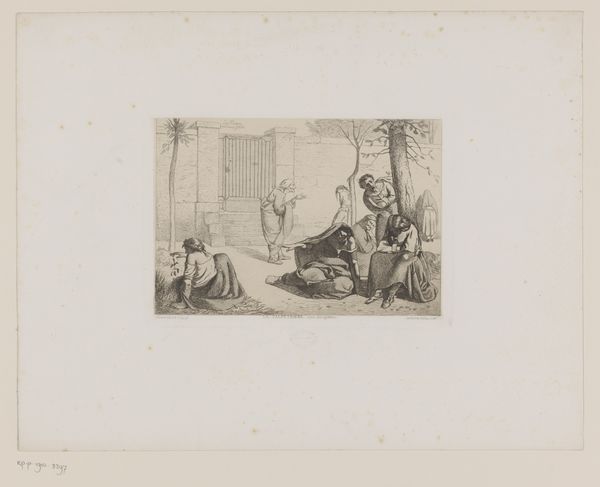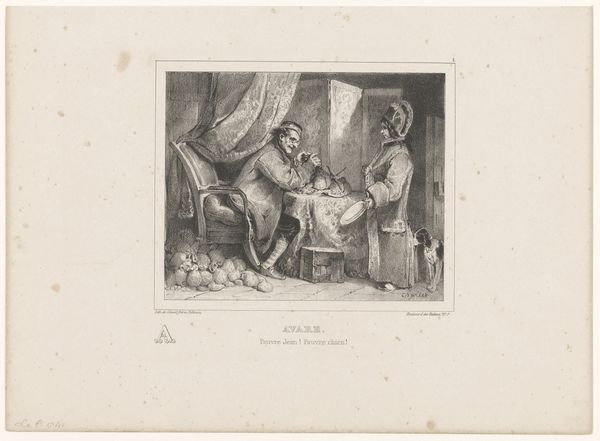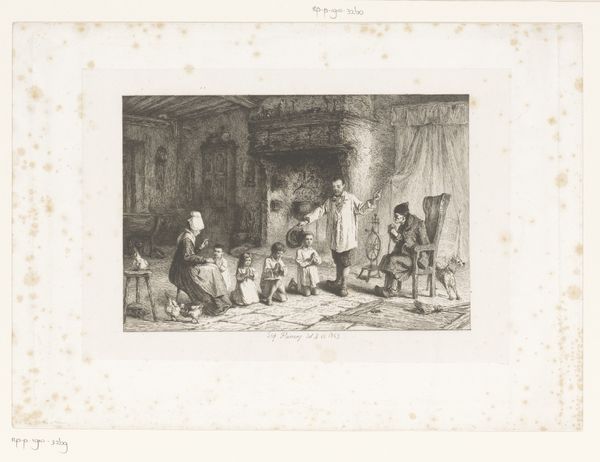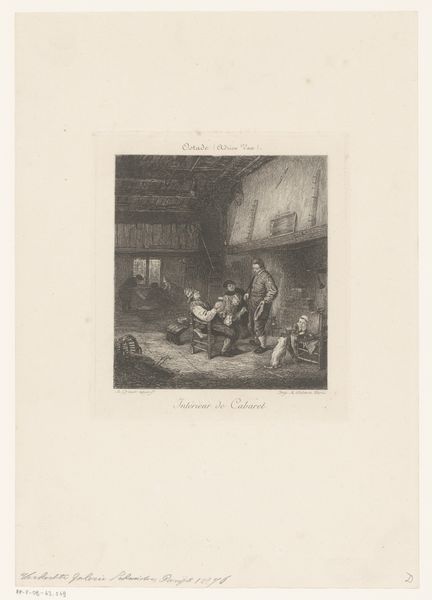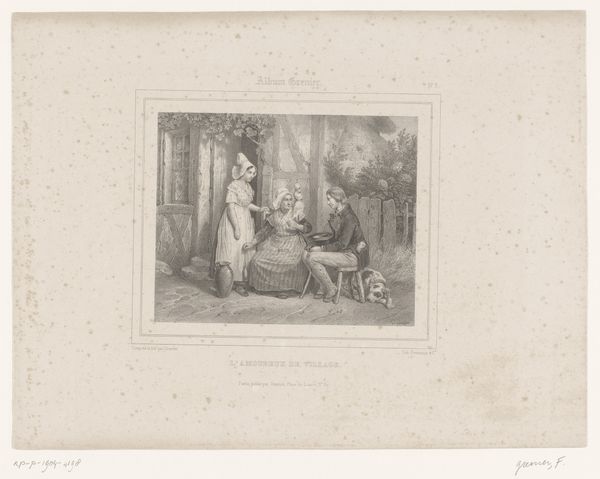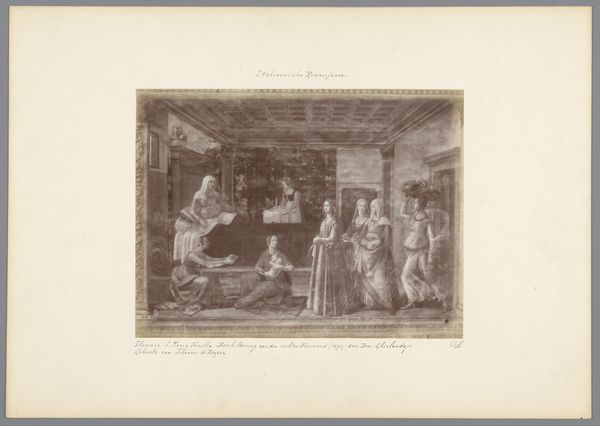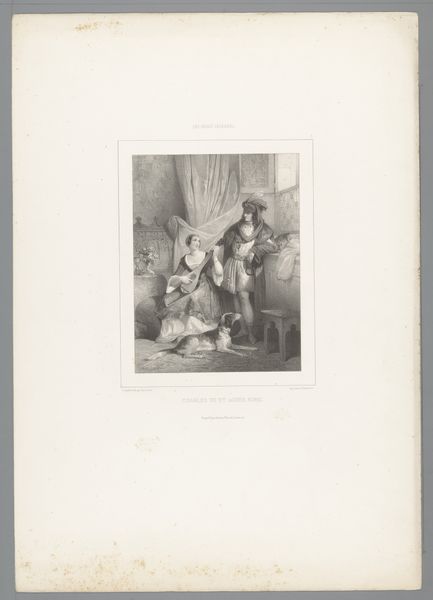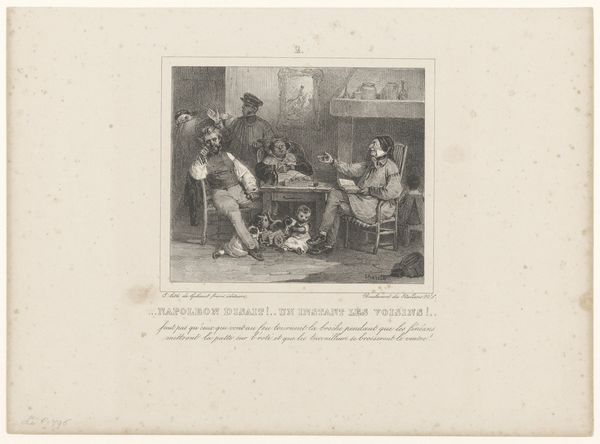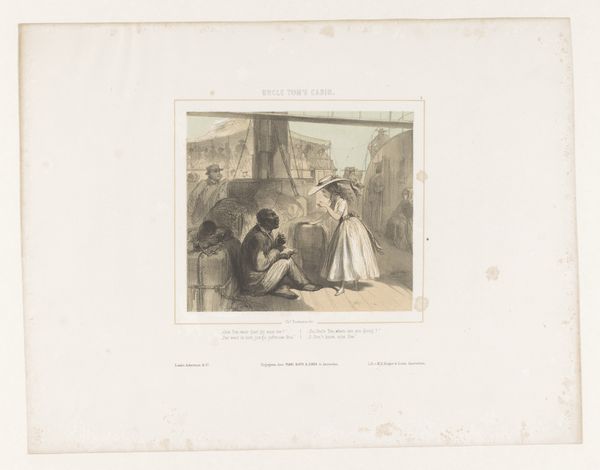
drawing, print, paper, ink, pen
#
pencil drawn
#
drawing
#
light pencil work
#
narrative-art
#
ink paper printed
# print
#
pencil sketch
#
old engraving style
#
figuration
#
paper
#
ink
#
pencil drawing
#
romanticism
#
pen-ink sketch
#
pen
#
pencil work
#
genre-painting
Dimensions: height 247 mm, width 338 mm
Copyright: Rijks Museum: Open Domain
Curator: At first glance, there’s something undeniably touching about this image. A sense of quiet devotion radiates from the scene. Editor: This is "Kinderlijke Piëteit", or "Childlike Piety", a print created by Nicolas Toussaint Charlet in 1835, now held at the Rijksmuseum. Charlet was known for his lithographs and drawings, often depicting scenes of military life or everyday people in Paris. Curator: It really captures an intimate moment, doesn't it? The soft lines create a sense of tenderness, though the setting seems rather humble. You have a figure attending to a seated woman, maybe her mother or grandmother, and a young boy sits nearby. Editor: Yes, there's a vulnerability communicated here. In iconographic terms, we often see these images of domestic caretaking connected to ideas about the sacred nature of the family. Piety, in this context, is both religious devotion and filial duty. You see this caring depicted quite a bit, especially in 19th century artworks. Curator: This piece certainly speaks to the idealized roles that family members would have had in that era. What strikes me most is the contrast between the detailed rendering of the central figures and the sketchiness of the surrounding interior. This contrast almost seems intentional. Editor: Absolutely. The selective detailing draws your eye to those specific acts of service, emphasizing the virtue being displayed. But in a broader sense, such artworks were often tied into the changing social structure in France. After the Napoleonic era, art had a unique role to play in shaping collective cultural beliefs, often reflecting a nostalgia for tradition. Curator: That's an interesting perspective. Considering its display in the Rijksmuseum today, it prompts me to reflect on how historical representations of caregiving contribute to our current understanding of empathy and family dynamics. It raises questions about the universality of such images across social classes and eras. Editor: Exactly. The enduring resonance of familial love, rendered in ink on paper, provides a fascinating window into 19th-century values—and also invites reflection on how those values may or may not have shifted over time.
Comments
No comments
Be the first to comment and join the conversation on the ultimate creative platform.
